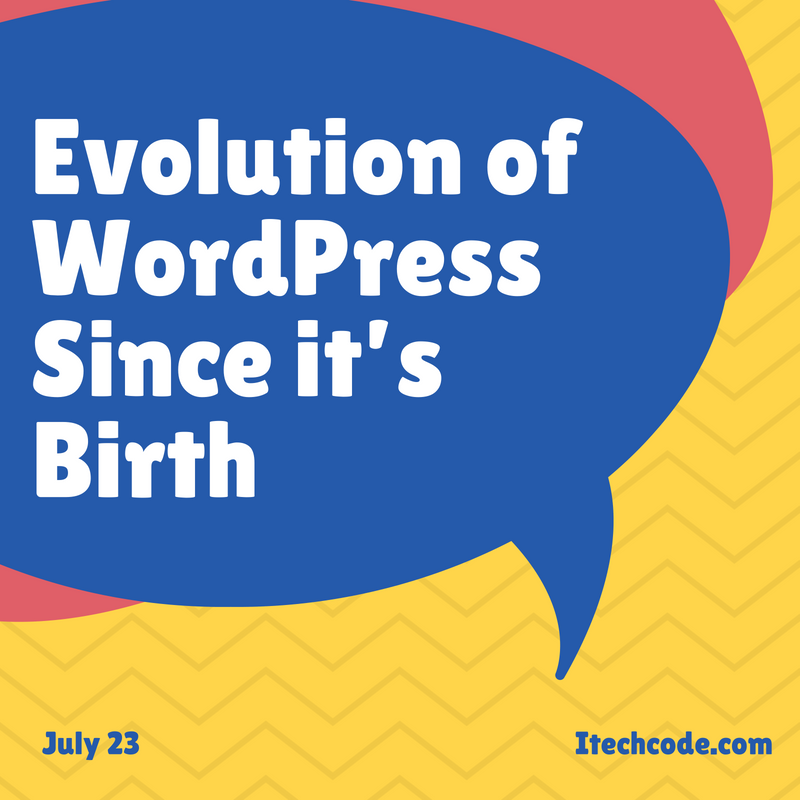Before WordPress, b2 or cafelog was a popular blogging software. In 2003, when the developers of b2 decided to discontinue it, two users, Matt Mullenweg and Mike Little decided to build something new on top of the software. This led to the birth of WordPress on May 27, 2003. With more than 250 releases, WordPress is undeniably one of the most popular Content Management Systems today. In this article, we will look at some landmarks in the evolution of WordPress.

WordPress 0.71 – 2003
The first version of WordPress – 0.71 didn’t have a dashboard. It had limited features and a manual installation process. But, it was a good start.
WordPress 1.0.1 – 2004
Also called Miles – 2004, it was from this release that WordPress started naming major releases after famous Jazz musicians from the past or present. This release was named after the famous Miles Davis.
On the development front, the b2 file structure was replaced by its own style. Users could now select multiple categories and WordPress had a new installer along with several other developments.
WordPress 1.2 – 2004
This release was named after the Jazz great – Charles Mingus and was called Mingus – 2004. This was a very important release as it introduced Plugins to users. Sub-categories were added and so were thumbnails and custom fields among other developments.
WordPress 1.5 – 2005
An important feature of this release was the dashboard. This release also introduced pages along with posts and added support for multiple themes within the same installation.
WordPress 2.0 – 2005
This release saw the introduction of the blue header and a complete change in the admin area. It also used Ajax to perform some tasks, making it faster than the earlier releases. People were introduced to the WYSIWYG editor and Akismet was introduced to manage the spam comment problem.
WordPress 2.5 – 2008
In this release, more useful information got added to the dashboard and one-click upgrades were made possible for plugins from the WordPress plugin directory.
WordPress 3.0 – 2010
This release saw the merger of WordPress core with its sister-project WordPress MU. It also transformed the blogging platform into a Content Management System. Some new introductions in this release were taxonomies, post types, headers, navigation menus, etc.
WordPress 3.5 – 2012
The primary feature of this release was creating a user interface that looked equally good on any device since smartphones and high-resolution devices were becoming the norm.
WordPress 3.8 – 2013
The WordPress UI style, which wasn’t changed since 2008 was upgraded in this release keeping mobile devices in mind.
There have been many other releases, with minor but significant changes to the interface cumulating to the WordPress that we see today. With developers and the WordPress community working tirelessly to improve the experience of developers and users alike, we can expect some great changes in the future too. Among the anticipated changes, the Gutenberg editor which will eventually replace the WYSIWYG editor is expected to be released with WordPress 5.0 or later.
WordPress has made starting a blog or a website easy. Also, Managed WordPress Hosting ensures that you get the best platform to run and manage your WordPress website. With plans optimized for speed, security, and automatic updates, the Hosting landscape is prepared to welcome the future versions of WordPress with open arms.
You can also stay updated by subscribing to iTechCode.